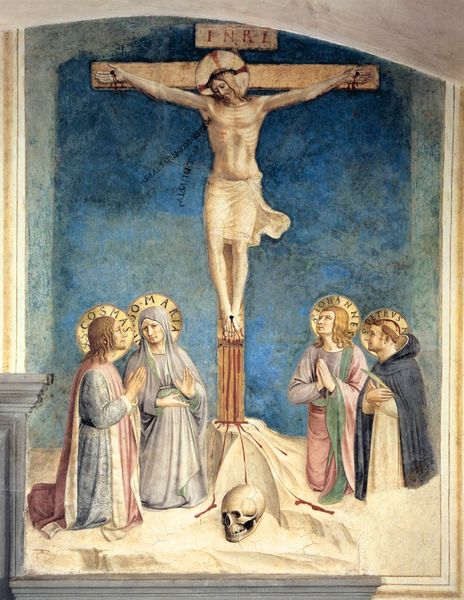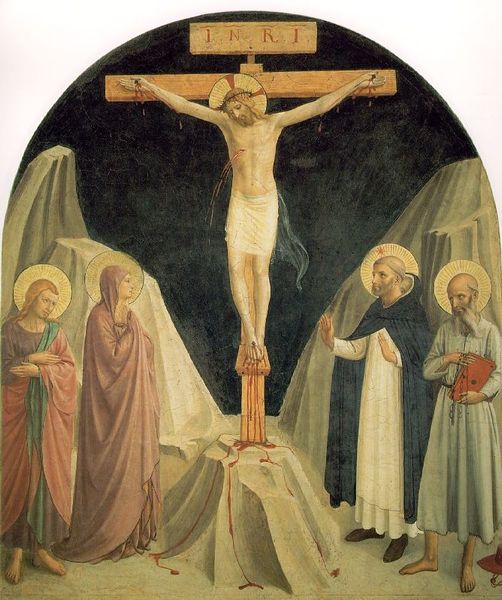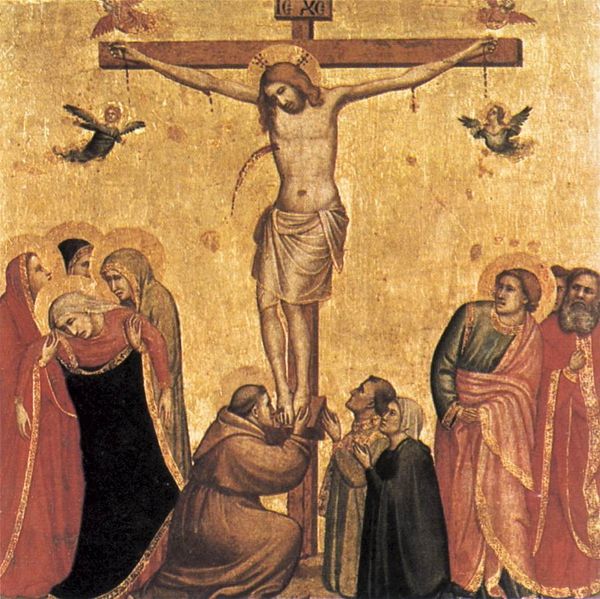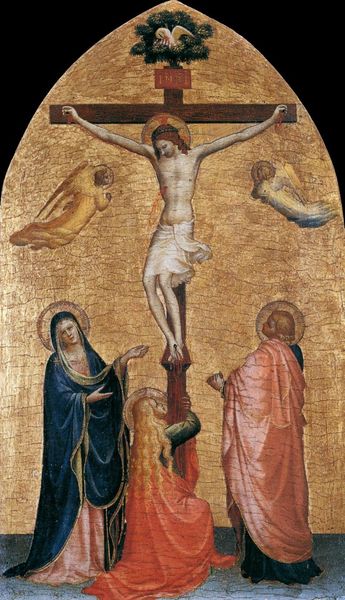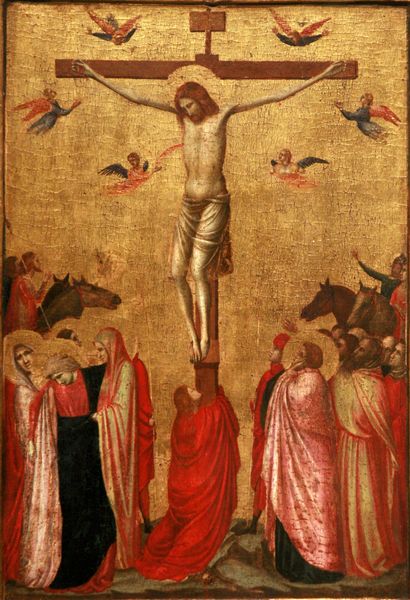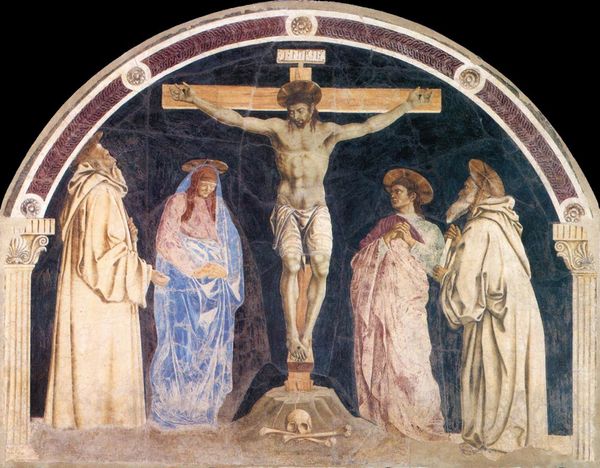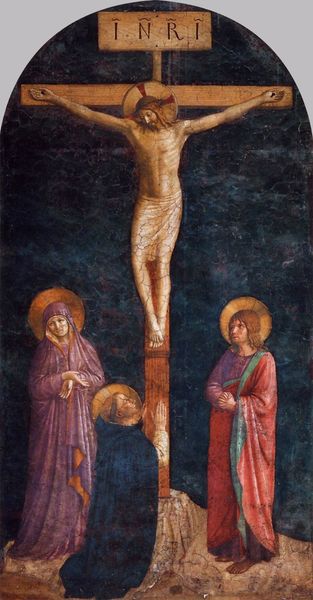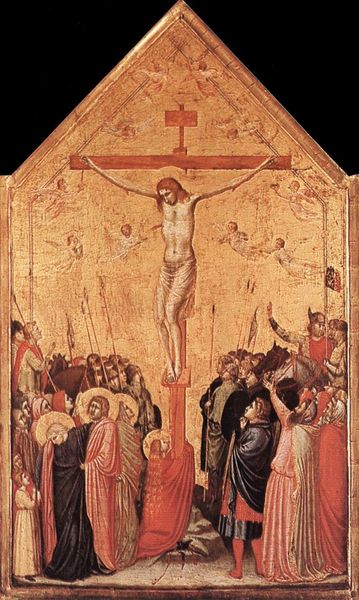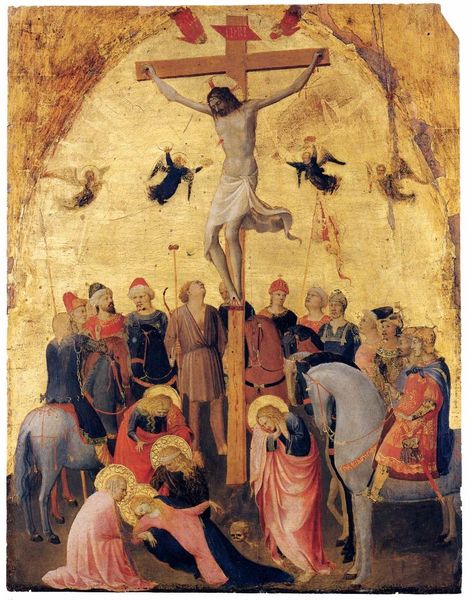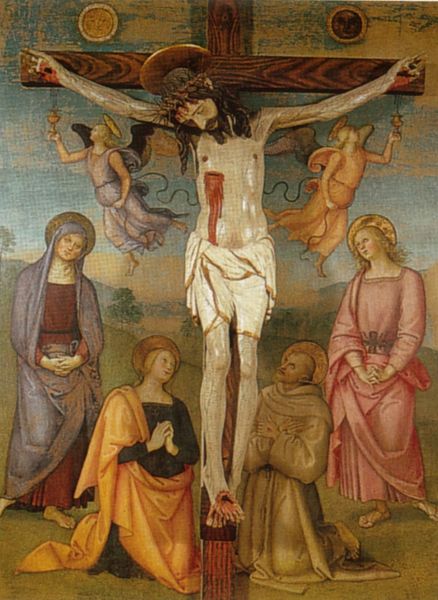
Crucifixion with Mourners and Sts. Dominic and Thomas Aquinas 1442
0:00
0:00
fraangelico
Basilica di San Marco, Florence, Italy
fresco
#
narrative-art
#
fresco
#
oil painting
#
cross
#
christianity
#
crucifixion
#
history-painting
#
italian-renaissance
#
christ
Dimensions: 213 x 165 cm
Copyright: Public domain
Curator: This is Fra Angelico’s fresco, "Crucifixion with Mourners and Sts. Dominic and Thomas Aquinas," created around 1442 and still viewable at the Basilica di San Marco in Florence. Editor: There's an arresting quietude here. The figures feel deliberately placed, almost diagrammatic. It's more a study of sorrow than an outpouring of grief, I think. Curator: Precisely. Observe the organization: Christ central and high, flanked by the two thieves on smaller crosses. Below, a register of holy figures experiencing the event. Fra Angelico uses the fresco medium here to produce the effects of smoothness and to create depth with shadows. Editor: Note how Saints Dominic and Thomas Aquinas stand below, with Dominic gesturing upward, and how, Mary, cloaked in grey, represents purity. Fra Angelico emphasizes the skull at the foot of Christ’s cross to point out the intersection of Christ’s sacrifice and death. He makes an explicit parallel between salvation and mortality here. Curator: You're right; the iconographic program is intensely sophisticated, relying on well-established visual conventions of Christian art, from the gold halos to the placement of figures, while also introducing stark contrasts and careful symmetry. I can detect in the rendering of the drapery some classical influence, evident, for instance, in the delicate flow and arrangement. Editor: Indeed. It seems Angelico's aiming to create not just a representation of the event but a contemplative space. The way each figure is individualized, despite being part of a larger whole, suggests layers of meaning to be discovered through personal reflection. I consider, also, how color evokes emotional responses to guide one in a pilgrimage from desolation to renewal and light. Curator: I agree. Each character is intentionally stylized as an abstraction and component. Editor: The geometry, then, of human form and placement communicates in total as both suffering and a transcendence to me. Curator: A profound engagement with artistic, religious, and intellectual concepts makes this fresco unforgettable, wouldn’t you agree? Editor: Definitely; it is, to me, an intimate, deeply thoughtful encounter with faith, death, and pictorial artistry.
Comments
No comments
Be the first to comment and join the conversation on the ultimate creative platform.
